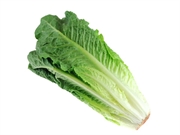- Taking a GLP-1 Medication? Here’s Tips to Holiday Eating
- Bird Flu Virus in Canadian Teen Shows Mutations That Could Help It Spread Among Humans
- Flu, COVID Vaccination Rates Remain Low as Winter Nears
- ’10 Americas:’ Health Disparities Mean Life Expectancy Varies Across U.S.
- Short-Term Hormone Therapy for Menopause Won’t Harm Women’s Brains
- Could a Vitamin Be Effective Treatment for COPD?
- Woman Receives World’s First Robotic Double-Lung Transplant
- Flavored Vapes Behind Big Surge in U.S. E-Cigarette Sales
- Reading Beyond Headline Rare For Most on Social Media, Study Finds
- Meds Like Ozempic Are Causing Folks to Waste More Food
More E. coli Illnesses Linked to Tainted Romaine Lettuce

More Americans have been sickened with E. coli after eating romaine lettuce thought to be grown in Salinas, Calif., federal health officials said Tuesday.
Twenty-seven new cases have been reported over the past few days, according to the U.S. Centers for Disease Control and Prevention. That brings the total to 67 across 19 states.
In 39 cases, illnesses have been so severe as to require hospitalization, although no deaths have yet been reported.
Late Friday, the U.S. Food and Drug Administration issued a warning to consumers to avoid all romaine lettuce grown in Salinas, Calif., due to possible contamination with E. coli bacteria.
The goal “is to limit exposure and help prevent additional people from becoming sick,” FDA Deputy Commissioner for Food Policy and Response Frank Yiannas said in an agency news release at the time.
“Our investigation has led us to farms in Salinas, California, and while the FDA is sending investigators there to look for the source of contamination, we are updating our advice today to help protect the public health and to help ensure we contain this outbreak,” he said. “Consumers should not eat any romaine lettuce harvested from Salinas, California.”
Romaine lettuce harvested elsewhere is thought to be safe to eat, Yiannas added.
He added that the latest advisory extends to packaged salads included in a U.S. Department of Agriculture advisory issued on Thursday.
A complete list of those products can be found here.
In the meantime, consumers have ways of knowing where the romaine lettuce sold in supermarkets was raised, Yiannas said.
“Romaine lettuce may be voluntarily labeled with a harvest region,” he said. “If romaine lettuce has ‘Salinas’ on the label in any form [whether alone or with the name of another location] do not eat it. Throw it away or return it to the place of purchase.”
And if there is no labeling on lettuce indicating its origin, or labeling does not indicate that it has been grown indoors, better be safe than sorry and also “throw it away or return it to the place of purchase,” Yiannas said.
“Consumers ordering salad containing romaine at a restaurant or at a salad bar should ask the staff whether the romaine came from Salinas,” he added. “If it did, or they do not know, do not eat it.”
Suppliers, distributors, retailers and restaurants are also being asked to cease transporting, selling or serving romaine lettuce grown in Salinas, the FDA said.
The FDA noted that the strain of E. coli identified in the current outbreak is a familiar one.
“Genetic analysis of the E. coli O157:H7 strains from patients in this current outbreak are similar to strains of E. coli O157:H7 associated with a previous outbreak from the fall of 2017 and the fall of 2018 that affected consumers in both Canada and the United States,” the agency said.
Symptoms of E. coli infection — which develop a few days after swallowing the germ — typically include diarrhea (often bloody), severe stomach cramps and vomiting. People who develop such symptoms should contact their doctor, the CDC said.
Most people do recover within a week, the agency said, but some illnesses can last longer and be more severe.
More information
The U.S. Centers for Disease Control and Prevention has more on E. coli.
Source: HealthDay
Copyright © 2024 HealthDay. All rights reserved.



-120x134.jpg)




